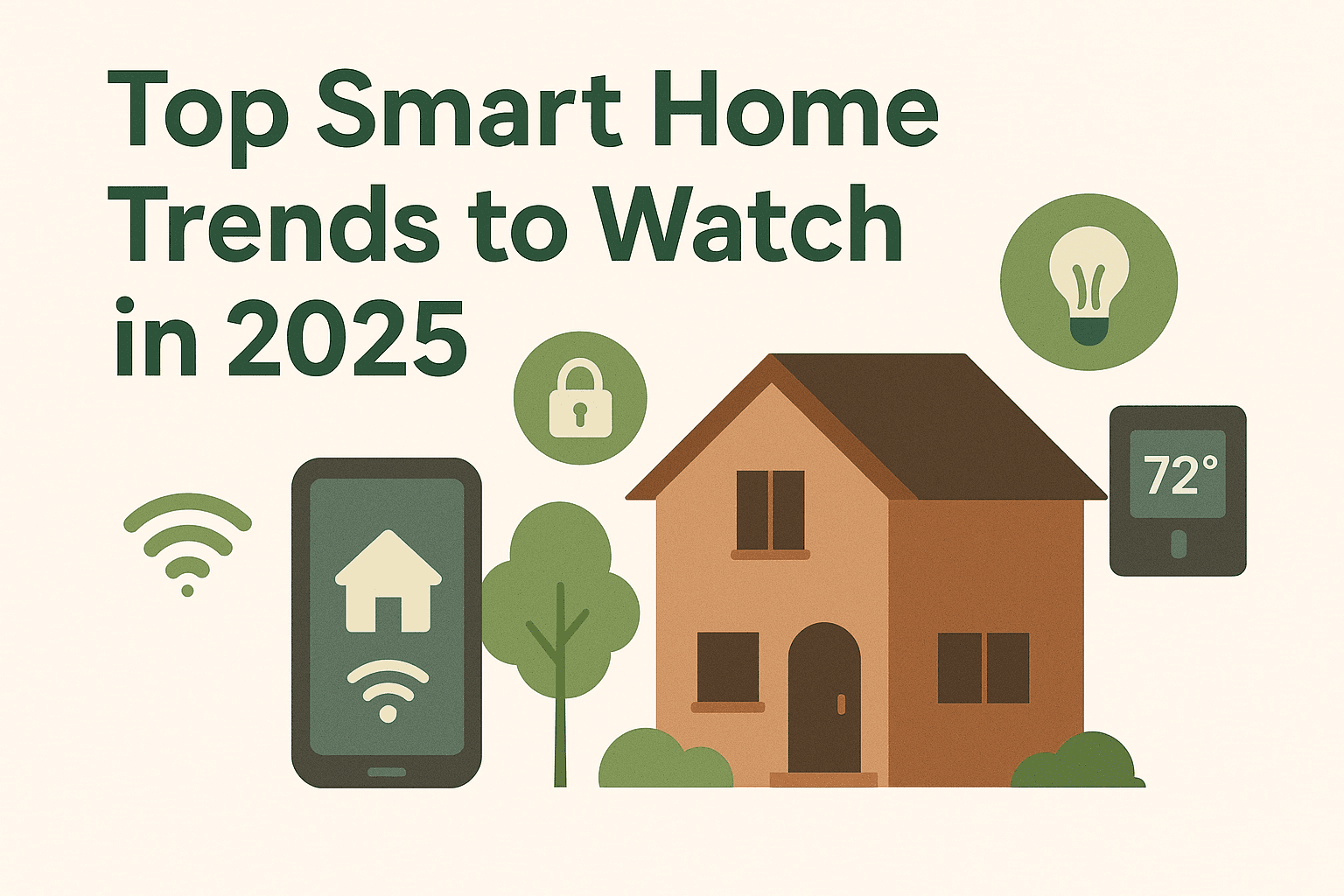Top Smart Home Trends to Watch

From voice-controlled lighting to AI-driven security, smart homes in 2025 are redefining comfort and energy efficiency. Devices now communicate across platforms, creating homes that learn your habits and adjust automatically. This guide explores the top trends shaping the next generation of living spaces—and how to adopt them at reasonable cost.
1. AI-Powered Energy Management Modern systems monitor your power usage and automatically adjust heating, cooling, and lighting. Paired with occupancy sensors and adaptive schedules, these platforms reduce waste without sacrificing comfort.
- What it does: Learns your routines, pre-heats/cools rooms, dims lights, and shifts heavy loads to off-peak hours. - Benefits: Lower bills, smaller carbon footprint, and more consistent comfort. - Starter kit: Smart thermostat + smart plugs + room sensors.
Cost and ROI (Typical Ranges) - Smart thermostat: $100–$250; payback 6–18 months in temperate climates. - Smart plugs/switches: $15–$40 each; payback varies by device usage. - Whole-home energy monitor: $200–$350; insights help optimize larger loads.
2. Interconnected Ecosystems 2025 marks stronger integration between Google Home, Alexa, Apple Home, and Matter-enabled devices—so you can control most devices from a single app.
- Why it matters: Fewer “is this compatible?” headaches. - Tip: Prioritize Matter and Thread support for faster, more reliable local control. - Pro move: Group devices by room and routine (e.g., “Goodnight” shuts blinds, locks doors, and arms security).
3. Smarter Security AI cameras now detect unusual patterns, distinguishing between pets, family members, and strangers. Smart locks support temporary guest codes, and doorbells verify packages.
- Privacy first: Favor local video storage or end-to-end encryption when possible. - Practical add-ons: Glass-break sensors, water-leak detectors, and presence simulation lighting. - Neighborhood fit: Adjust sensitivity to avoid false alerts from street traffic.
4. Sustainable Design Eco-friendly devices—like solar-powered blinds, heat-pump dryers, and ultra-efficient LED lighting—are becoming standard.
- Materials: Choose FSC-certified wood, low-VOC paints, and recycled plastics. - Automations: Close blinds during peak sun, pre-cool in off-peak hours, and pause HVAC when windows are open.
5. Voice, Gesture, and Presence Homes are moving beyond voice. Gesture controls, facial recognition at entry, and radar-based presence sensing are emerging for lighting and media.
- Accessibility win: Hands-free controls help seniors and people with limited mobility. - Reliability tip: Combine presence sensors with time-of-day rules to prevent accidental triggers.
6. Privacy and Security Essentials - Change default passwords and enable multi-factor authentication. - Prefer local processing for cameras and voice assistants where available. - Create a separate Wi‑Fi network (VLAN/guest) for smart devices.
Quick Starter Checklist 1) Pick a primary ecosystem (Google/Alexa/Apple). 2) Choose Matter-enabled devices where possible. 3) Start with thermostat, lighting, and a door lock. 4) Add sensors to refine automations over time.
FAQs - Do I need professional installation? Not always—lighting, plugs, and sensors are DIY-friendly; HVAC and wiring may need a pro. - Will my old devices work with Matter? Many vendors offer firmware updates; check model support before buying.
Conclusion Smart homes in 2025 focus on seamless living—reducing waste, increasing comfort, and giving you back your time. Start small, prioritize privacy, and expand with devices that support open standards.
Related Topics (Ads):
Advertisements - Sponsored content related to this topic

